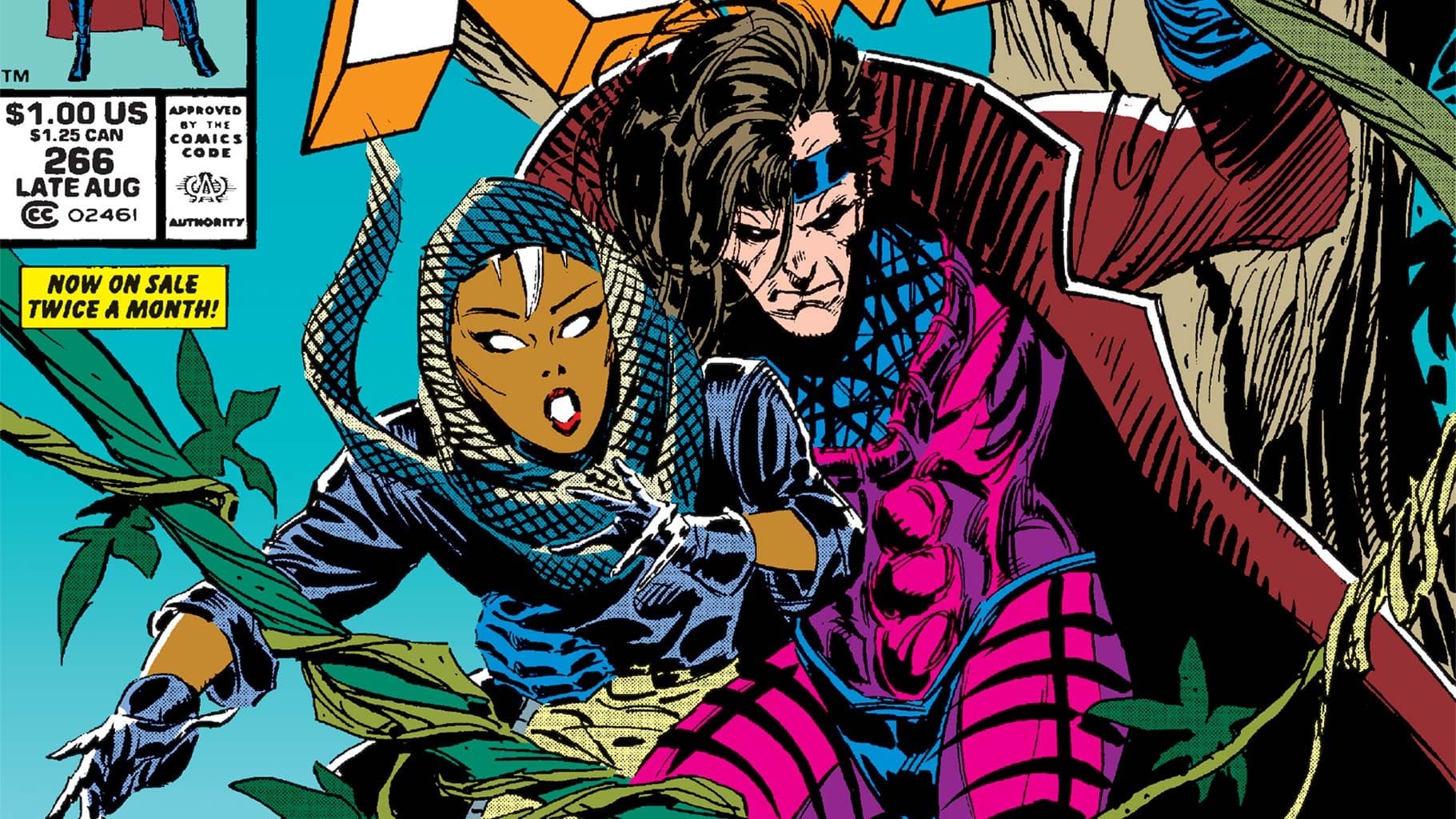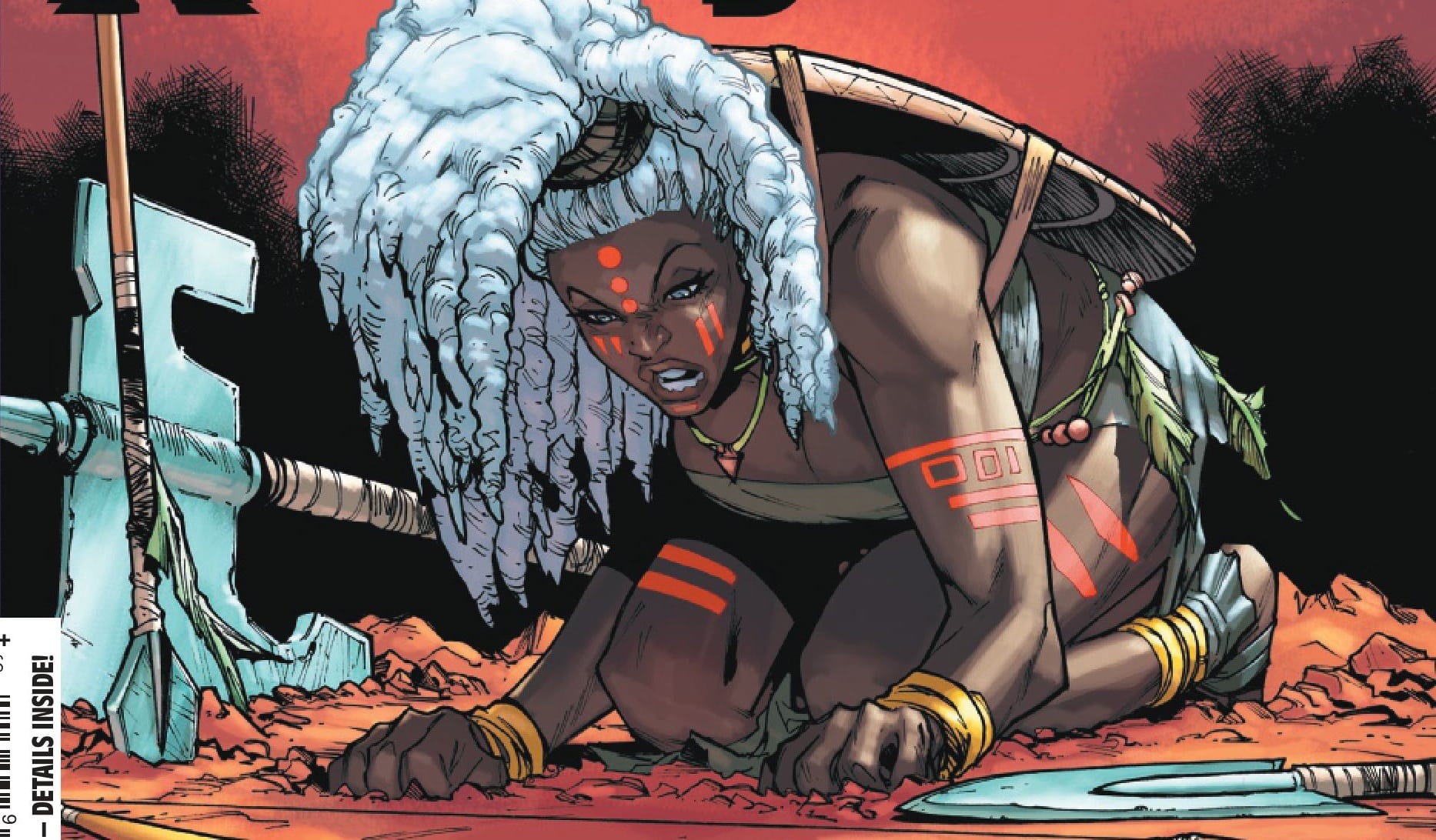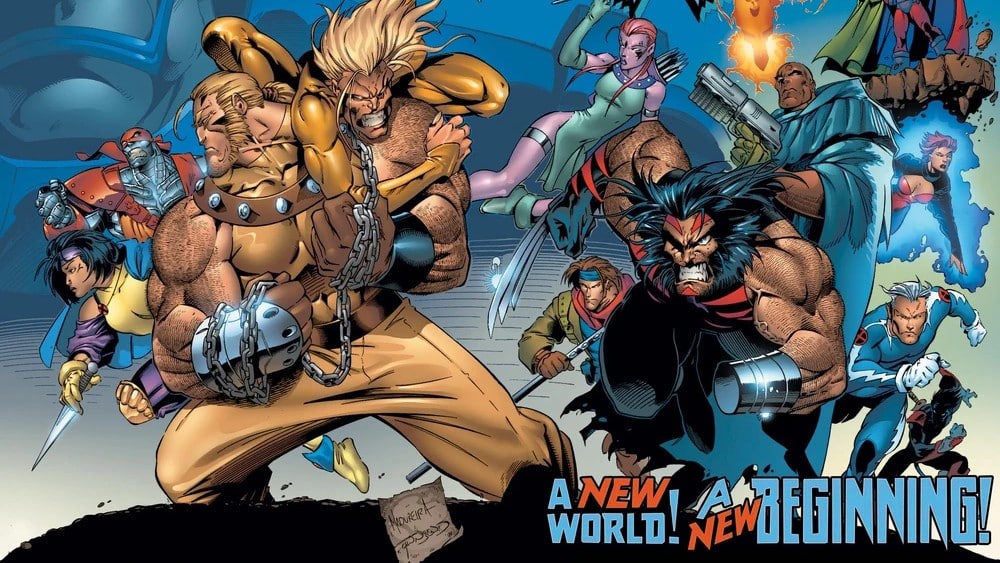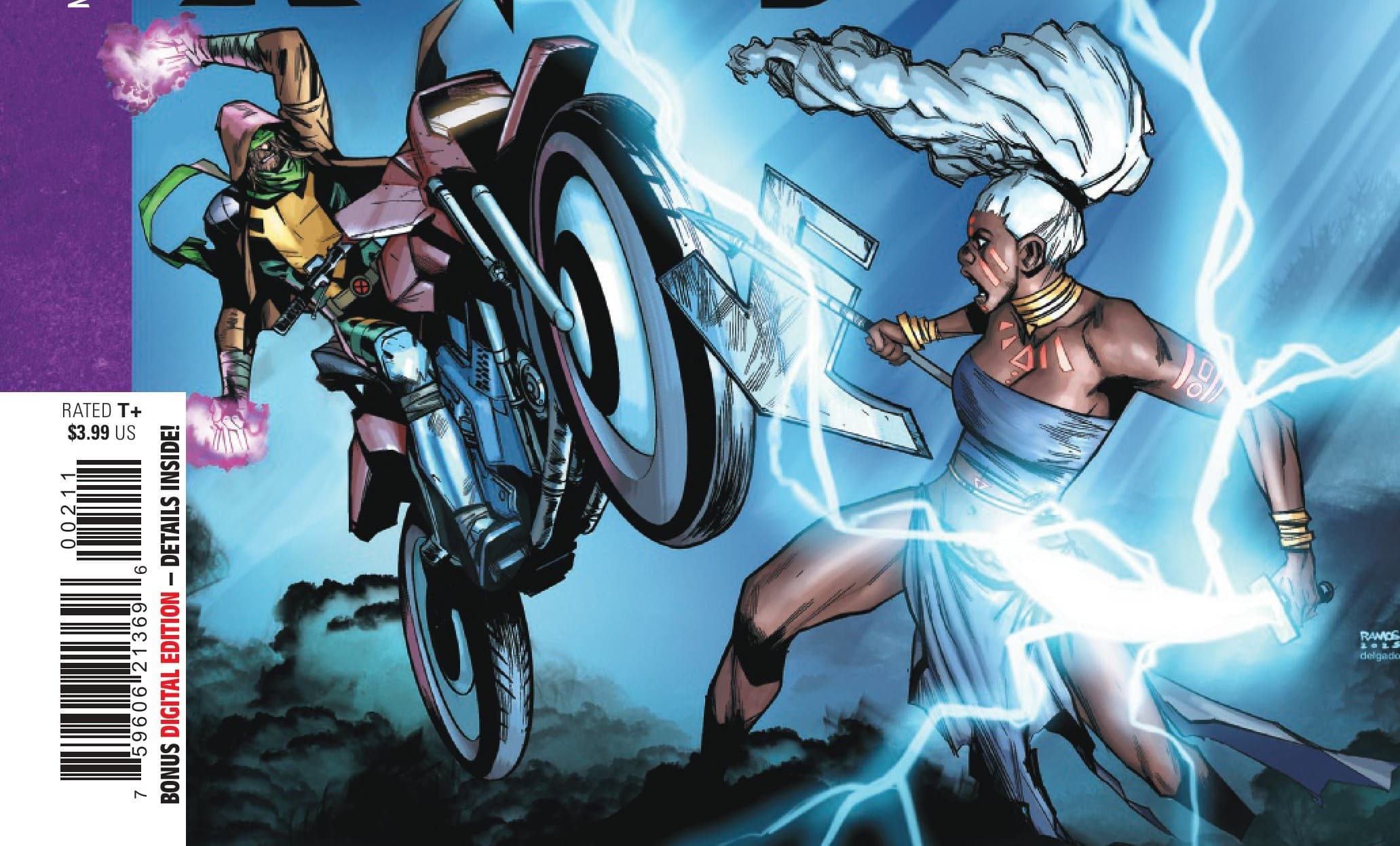Ed. Note: This is another retro review of a classic comic, sparked by the release of a facsimile edition of Uncanny X-Men #266 and the arrival of a new Uncanny X-Men #1 this week.
With a teenage Storm on the run from the Hound-like thralls of the Shadow King, her only ally is a charismatic thief with an explosive mutant power: Gambit! Uncanny X-Men #266 is written by Chris Claremont and drawn by Mike Collins, inked by Josef Rubinstein, lettered by Pat Brosseau and Tom Orzechowski, and colored by Brad Vancata.
Uncanny X-Men #266 was originally published at a curious and unique time for the X-Men. For the better part of a year, there had been no official team of X-Men. Rather, during this “non-team” era, the series had featured a rotating cast of characters in isolated groups pursuing various plot threads: an ad hoc team of X-Men composed of random supporting characters fighting Legion on Muir Island; Wolverine, Jubilee and Psylocke battling The Hand; Colossus — transformed into a professional artist by the mystical Siege Perilous — teaming up with X-Factor to battle Masque’s Morlocks; Forge and Banshee trying to find out what the heck happened to the X-Men. Marc Silvestri had left the book; Jim Lee, after a three-issue guest stint, had yet to assume lead artist responsibilities (Uncanny X-Men #266 is instead drawn by Mike Collins, a perfectly fine artist who nevertheless lacks the kinetic energy of Silvestri or Lee). Uncanny #266 itself is the middle chapter of a story involving a semi-amnesiac, teenage Storm battling the writhing thralls of the Shadow King, the latest installment in a sprawling Shadow King narrative writer Chris Claremont had been deploying, off and on, across everything from Uncanny X-Men to New Mutants to Excalibur, over the course of years. Into this mix of narrative experimentation and artistic upheaval steps Gambit.
To be clear, Uncanny X-Men #266 isn’t technically Gambit’s first appearance. X-Men Annual #14, the story that marks Claremont’s first significant step toward pulling his disparate threads back into something resembling a traditional comic book team, beat it to the punch, featuring scenes of Storm and Gambit while going on sale before the issue that introduced Gambit to readers and to Storm. Yet despite that, fans and collectors have long lauded Uncanny #266 as the character’s first appearance. It helps that it’s clearly meant to be: He is featured prominently on the cover, it details his first encounter with Storm, and much of the story is built around showcasing his abilities and personality.

At the same time, Gambit doesn’t quite appear on the page fully formed relative to how fans know him today. His trademark playing cards are nowhere to be found (He hurls generic spikes instead). The source of his kinetic charging ability seems to be his eyes. It’s also suggested he has superhuman charisma, an ability to charm others into doing what he asks. And while he is mostly on model visually, Collins’ Gambit is not Lee’s (who designed him), nor Andy Kubert’s (who drew him on the cover), nor Art Adams’ (whose Gambit technically was the first Gambit readers saw, due to his penciling X-Men Annual #14).
Nevertheless, there is still an undeniable coolness to Gambit right off the bat. He has a visually exciting power, a unique look and he smokes. He’s a thief with loose morals, but also an immediate steadfast loyalty to Storm (He passes up the opportunity to steal more to save her, out of respect for a fellow thief). He says “chére.” He’s a mystery. In fact, he immediately calls to mind the X-Men’s other roguish loner with a mysterious past, a simple but engaging visual hook and complex morality: Wolverine.

Yet Wolverine debuted as little more than a one-off antagonist for the Hulk; his coolness and fan favoritism developed organically, over time, as the character became more three-dimensional and bits of information and backstory were parsed out. Gambit, however, arrives on the scene almost self-consciously styled as a cool new Wolverine type for the dawning ’90s (In fact, in the few Gambit scenes Claremont wrote after bringing the X-Men back together, he established a blossoming rivalry between the two, tapping into a “seasoned vet/upstart rookie” vibe as the two fought over who was the more relevant anti-hero badass). The question then becomes, how intentional is Gambit’s Poochie-like “coolness” in Uncanny #266? Reading it as a teenager (or for the first time after encountering the character in dozens of other stories or episodes of the animated series), it’s hard to care whether the issue is trying too hard to make Gambit seem cool — you just accept him at face value as being cool, because he already is to you. But in the context of the issue, it’s worth asking, just how calculated is Gambit’s whole schtick, and why?
A long-held theory in some corners of fandom is that Gambit is meant to be the flip side of Mister Sinister as Claremont originally envisioned the villain. That is, if Sinister is meant to be the manifestation of a stunted teenager’s dark side (the young Nate who tormented Cyclops in his childhood orphanage), then Gambit is meant to be the avatar of Nate’s heroic side, and thus, is consciously styled after what a teenage boy would think is cool. Claremont, for his part, has really only said that he intended for Gambit to be an agent of Mister Sinister, working to take down the X-Men from within (Strains of this idea linger, intentionally or not, in the later reveal that Gambit helped Sinister assemble the Marauders and lead them into the Morlock Tunnels to carry out their famous massacre). Though Claremont’s brief on-the-record statement on the matter doesn’t necessarily preclude Gambit being a manifestation like Sinister either.

One could argue then that Gambit’s immediate in-your-face coolness is calculated to endear him quickly to readers (and, in universe, to Storm and her X-Men allies, once they reassemble) to make his eventual betrayal hit all the harder. Or it could just be that Gambit was designed and debuted as a type of character that was extremely popular at the time. If the creators needed to shortcut the years of development put into making Wolverine so popular to get Gambit out the door and attracting the eyes (and money) of readers all the faster, well, that’s business, baby.
Either way, there’s no denying that Uncanny X-Men #266 is Gambit’s issue. Storm’s brief return to adolescence is largely a footnote at this point in X-Men history, the Shadow King plotline that drives this issue hardly more than that. The art is serviceable, at best, something akin to the ’80s house style at a time when the future Image Comics founders were in the midst of a visual revolution. At the center of all that is Gambit, the last significant new character introduced by Chris Claremont during his first, seminal X-Men run. He’s the most memorable part of the issue in part because the rest of the issue is largely unmemorable. But while the Gambit of Uncanny #266 isn’t quite the fully formed, playing card-wielding, charming/douchey rapscallion he’ll become, he’s remarkably close to it. He’s the most memorable part of the issue because he’s Gambit, so shamelessly drenched in the hottest trappings of ’90s kewl-ness that we can’t help but feel manipulated, even as we also can’t help but embrace him.
Austin Gorton also reviews older issues of X-Men at the Real Gentlemen of Leisure website, co-hosts the A Very Special episode podcast, and likes Star Wars. He lives outside Minneapolis, where sometimes, it is not cold. Follow him @austingorton.bsky.social.






